Hisense proves here that it can deliver products of really decent quality. The Hisense U7NQ is a television that offers many advantages, with its picture quality being one of its main assets. Thanks to Mini LED technology, this television offers deep blacks and high brightness, positively influencing contrast and image dynamics. Dolby Vision support further increases the capabilities of this model, providing cinematic experiences at home. When it comes to motion smoothness, the Hisense U7NQ is a great choice for gamers and those who appreciate dynamic content, such as sports. The rapid 144 Hz panel, low input lag, and additional features like VRR, ALLM, and Game Bar make gameplay on this television smooth and responsive. For daily usage, the television deserves praise for its high efficiency during the day. The high brightness level of 915 cd/m² means that the television performs well even in bright rooms, and additional features like the ability to record programs make it a very functional everyday choice. Despite all its advantages, the Hisense U7NQ also has its drawbacks. The VIDAA operating system, while fast, is not yet as developed as other platforms available on the market, resulting in the absence of several popular applications such as Spotify or Tidal. Gamers may be disappointed by the lack of support for HGiG, which affects the optimal reproduction of details in HDR games. If we plan to connect the television to a computer, we must reckon with issues related to font readability, especially on dark backgrounds. The Hisense U7NQ is a solid TV that offers very good picture quality and rich features for gamers. Despite a few shortcomings, it is a model that will satisfy most users, providing high picture quality, motion smoothness, and useful user features.
- Matching (Score)
- Our verdict
- TV appearance
- Where to buy
- Contrast and black detail
- HDR effect quality
- Factory color reproduction
- Color reproduction after calibration
- Smoothness of tonal transitions
- Image scaling and smoothness of tonal transitions
- Blur and motion smoothness
- Console compatibility and gaming features
- Input lag
- Compatibility with PC
- Viewing angles
- TV efficiency during daytime
- Details about the matrix
- TV features
- Apps
- Playing files from USB
- Sound
Hisense U7NQ vs SAMSUNG QN80F
Direct compare
Check the best price offer:
Hisense U7NQCheck the best price offer:
SAMSUNG QN80FU7NQ
QN80F

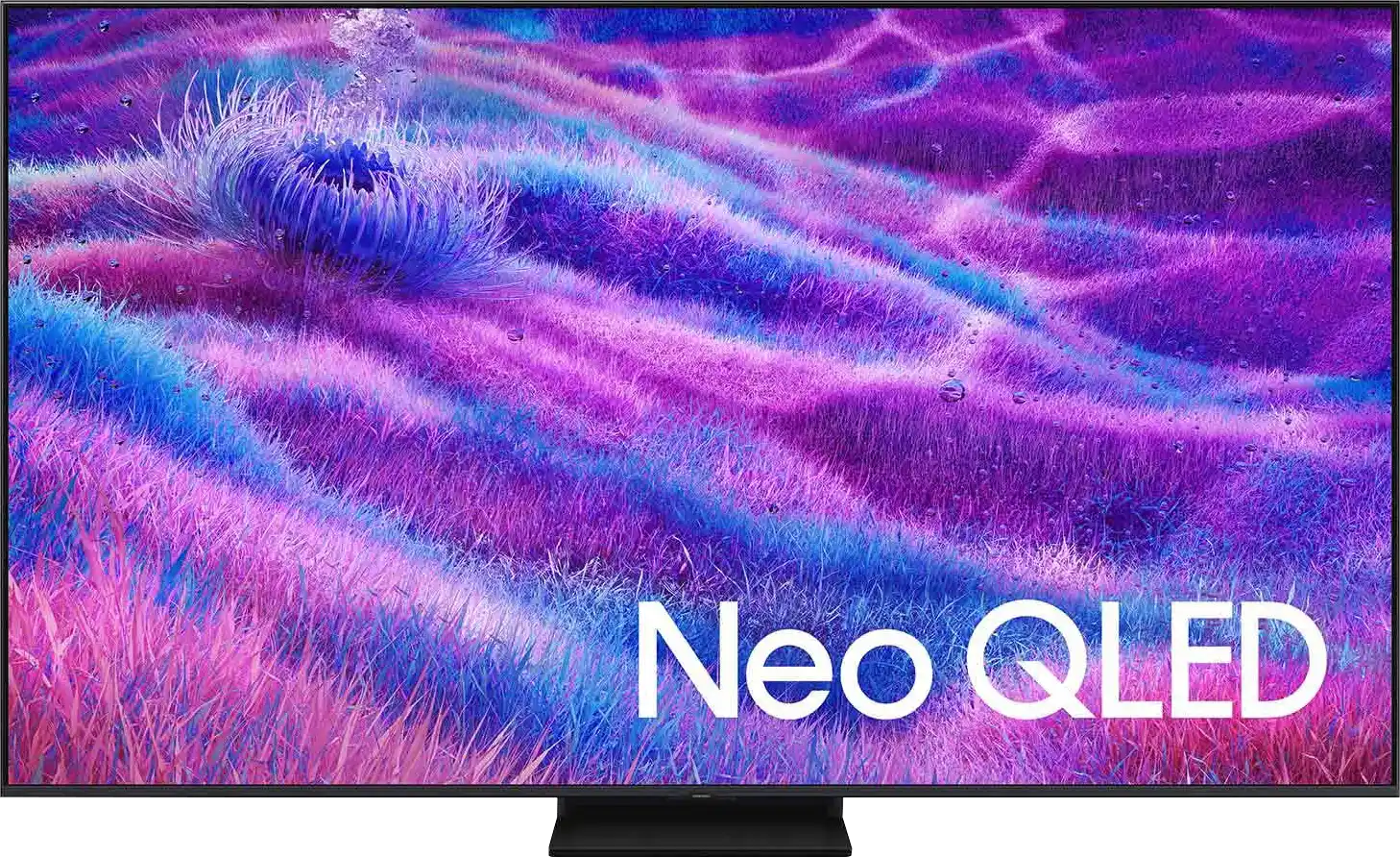
Panel type: LCD VA
Resolution: 3840x2160
System: VIDAA
Model year: 2024
Complete the survey to find out the result

Panel type: LCD VA
Resolution: 3840x2160
System: Tizen
Model year: 2025
Complete the survey to find out the result

Overall rating
7.3
7.3
Movies and series in UHD quality
7.0
6.9
Classic TV, YouTube
6.7
6.8
Sports broadcasts (TV and apps)
6.4
6.7
Gaming on console
8.2
8.5
TV as a computer monitor
8.0
8.8
Watching in bright light
7.6
6.6
Utility functions
9.0
7.5
Apps
7.7
8.7
Sound quality
6.9
6.7
Complete the survey to find out what fits your preferences
Advantages
Good contrast
High brightness of the panel - good performance during the day
Very good for gamers, sports - VRR, ALLM 144Hz
Low input lag
Recording function from built-in tuners
Nice black and contrast - VA matrix combined with MINI-LED backlighting.
Great brightness - up to 1000 nits in HDR
Fast and responsive matrix - 144 Hz
Rich support for gamers - 4xHDMI 2.1, VRR, ALLM, GameBar, Game Motion Plus
Very good usability in daylight
Advanced Tizen operating system
Simple operation
PiP function
Disadvantages
Not the best Image scaling and smoothness of tonal transitions
No support for DTS format – limitation when connecting home theater
No USB recording function
Relatively small number of dimming zones
Issues with HGiG function (for gamers) – update removed this option*
Our verdict
QN80F is the first in the history of Samsung's "eighty" series to feature Mini LED backlighting. And it does this really well. Although the number of dimming zones is not overwhelming, the black level is solid, and combined with high brightness, it allows for a very decent picture in HDR content. Additionally, there's a 144 Hz panel that provides excellent motion smoothness, and the set of features for gamers – VRR, ALLM, Game Motion Plus – makes the QN80F a model practically designed for those playing on console or PC. The television operates quickly and responsively, and the Tizen system runs like lightning – whether you're searching for apps or switching sources. Is there anything to criticize? Of course, as always – there are shortcomings in the system (like recording to USB), there’s no DTS support, and Mini LED is not without its limitations. But the QN80F is a great everyday television – versatile, well-thought-out, and... with significant price potential. Looking at the history of this series, we can expect this "eighty" to shake things up once it hits the first reasonable promotions. And it could be virtually unbeatable at its price – especially if Samsung improves the minor teething issues.
TV appearance




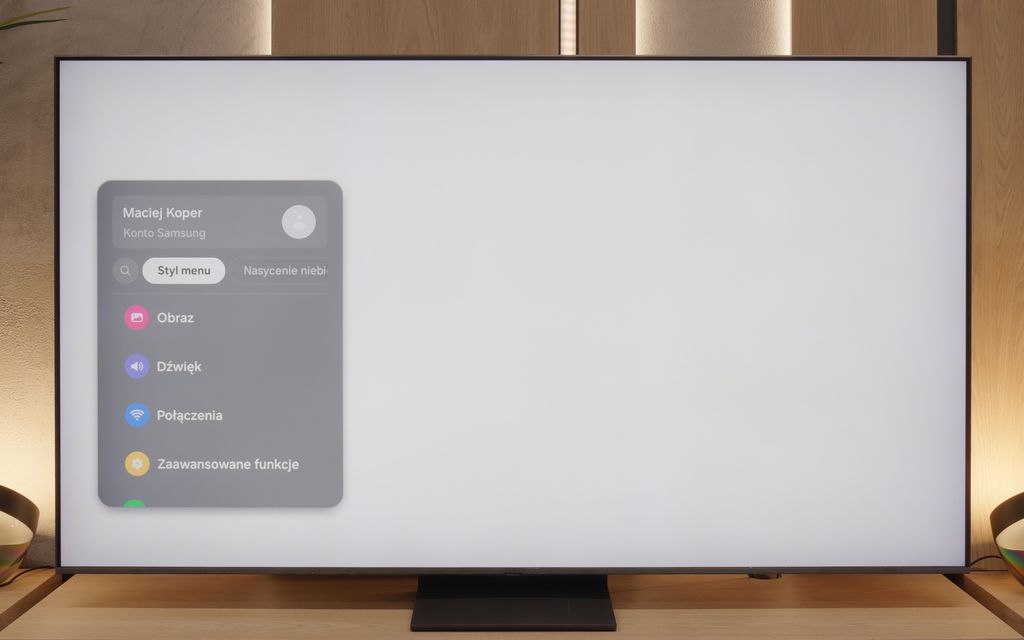
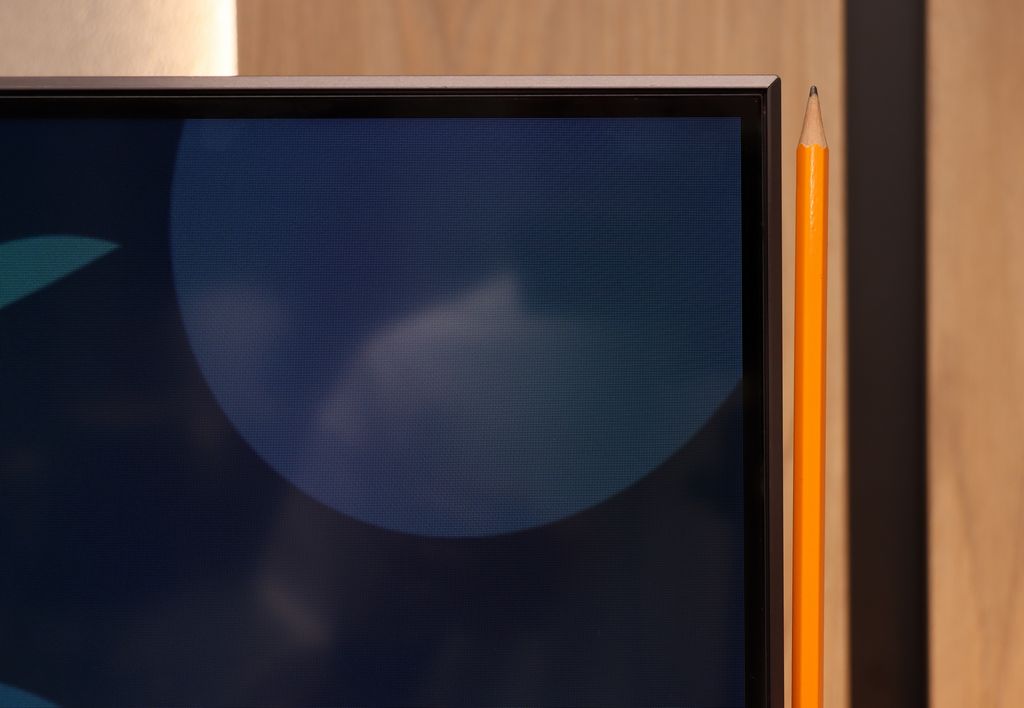
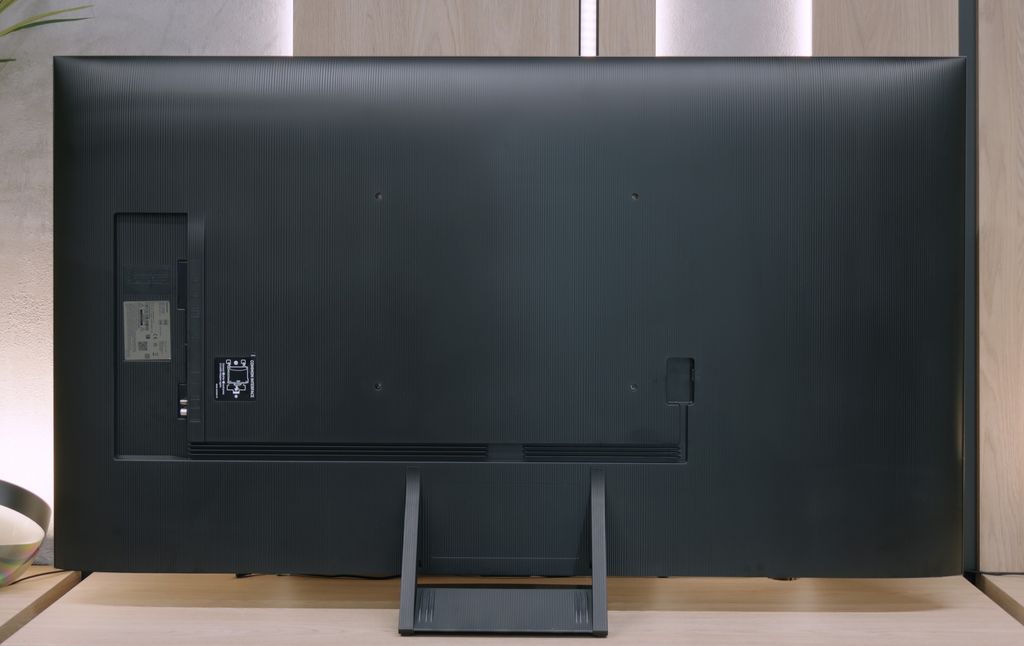

Where to buy
Contrast and black detail
7.2/10
6.8/10
Local dimming function: Yes, number of zones: 713 (31 x 23)
Local dimming function: Yes, number of zones: 88 (8 x 11)
Contrast:

Result
40,750:1

Result
42,600:1

Result
12,000:1

Result
12,150:1

Result
3,450:1

Result
34,100:1

Result
8,200:1

Result
32,500:1

Result
4,550:1

Result
3,800:1
Halo effect and black detail visibility:

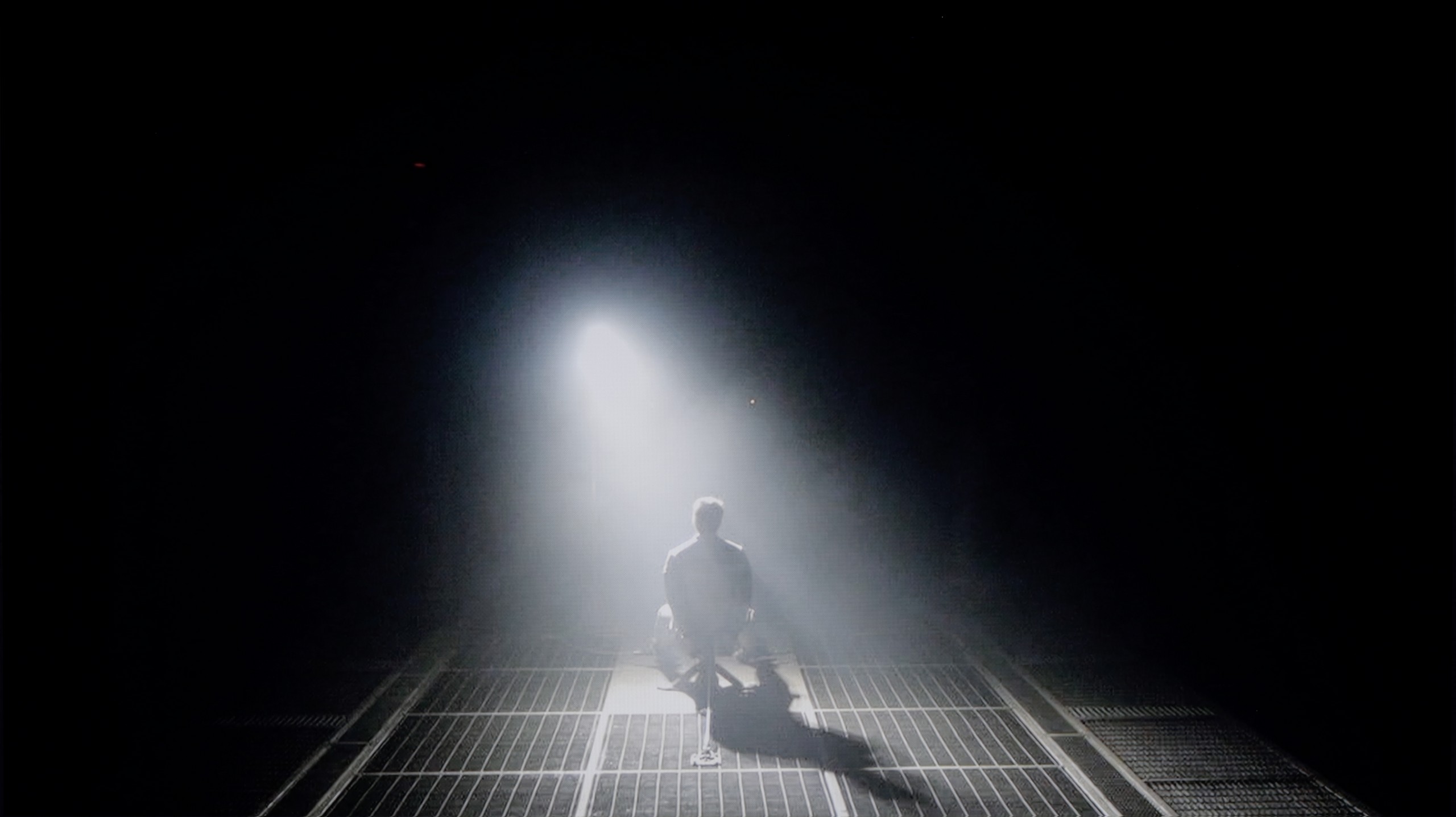
Hisense U7NQ is a television that uses a VA panel, crucial for achieving good contrast and appropriate black depth. This technology translates into vivid image quality when watching content in a dark room, where blacks acquire proper saturation and resemble deep tar rather than washed-out ash. Moreover, the TV features Mini LED backlighting, which in the tested 65-inch variant offers an impressive number of 713 local dimming zones. Naturally, smaller sizes will have fewer zones, while larger ones will have more, positively affecting overall contrast.
Under very favourable conditions, the TV achieves a contrast ratio of around 40,000:1. The local dimming technology performs excellently at managing bright and dark parts of the image, making the TV superbly render details in complex scenes. Despite the large number of zones, there may be issues with contrast in particularly demanding scenes, where small bright elements appear against a dark background. Sometimes the TV may dim these elements too much, causing a loss of brightness, and other times it excessively brightens them, leading to a halo effect—glows of light surrounding objects. This effect can be noticeable, for example, in a scene from the movie Sicario 2, where bright glows around the subtitles can be bothersome.
Nevertheless, the use of Mini LED technology with local dimming makes the overall image quality significantly better than in televisions without this technology. The effect is particularly noticeable when watching movies in a dark room—the blacks are deeper, and the contrast is more pronounced, allowing a full appreciation of details hidden in dark shots.
QN80F is a representative of the Neo QLED series, which means it's a television with Mini LED backlighting. Unlike its cheaper cousin, the QN70F model, here the diodes are placed directly behind the panel (rather than at the edges), which gives a solid advantage in contrast control right from the start. In the 65-inch variant we tested, we counted 88 local dimming zones – a result that may not be particularly impressive, but as it turned out, sufficient to achieve quite decent results.
In tests based on scenes from movies like Oblivion and The Meg, the QN80F performed well – blacks were deep, and the overall image consistency was eye-catching. However, in more demanding moments (e.g., scenes with a lot of bright details on a dark background), a halo effect appeared. This is where the limitation of the number of zones shows – bright elements could bleed into each other, and some details in dark areas lost sharpness and contrast. In one of the helicopter scenes (The Meg), we even noticed a slight flicker in brightness, as if the television was trying its best to maintain visibility of details at the expense of black depth.
However, these are not problems exclusive to this model – the halo effect or contrast drops in very complex scenes are something most Mini LED televisions struggle with, even the more expensive ones. In its class, the QN80F still performs positively and offers clearly better contrast than the QN70F model with edge lighting. For most users, this will be a level more than sufficient – though not ideal.
HDR effect quality
5.9/10
5.8/10
Luminance measurements in HDR:

Result
1023 nit

Result
290 nit

Result
637 nit

Result
198 nit

Result
907 nit

Result
799 nit

Result
533 nit

Result
717 nit

Result
245 nit

Result
656 nit
Scene from the movie “Pan” (about 2800 nits)


Scene from the movie “Billy Lynn” (about 1100 nits)


Static HDR10


Dynamic: Dolby Vision
Dynamic: HDR10+


HDR luminance chart:
SAMSUNG QN80F
Luminancja HDR
Luminance of RGB colors
Hisense U7NQ
Luminancja HDR
Luminance of RGB colors
The Hisense U7NQ 65 television demonstrated significant capabilities on the luminance chart, exceeding the 1000-nit barrier and achieving very high brightness results without issue in the first, third, and fifth test scenes. However, as before, in the second and fourth test scenes, for example from the film Sicario 2, there are significant problems with maintaining brightness, and the results around 200 nits are very disappointing. Despite a large number of dimming zones, the algorithm in the television responsible for controlling these zones is unable to react appropriately — in this case, it significantly dims small elements like the moon or the light from a helicopter. The bright light that should blind us is too dim to be called an HDR effect. Nevertheless, it is worth praising the television for its high coverage of the DCI-P3 colour gamut at 96%, which allows it to accurately reproduce most film scenes.
QN80F is quite a bright screen – in synthetic tests, it achieved nearly 1000 nits, which allows for reasonable expectations with HDR content. And indeed, in many scenes, the television truly shines. Sequences with a lot of light – such as shots from the movie Life of Pi or wide, bright surfaces in The Meg – look spectacular. Brightness maintains around 700 nits, which provides a solid effect, sufficient to feel the true "HDR magic." Unfortunately, not every scene looks that good. In materials with small, bright details on a dark background, like in Sicario 2, the television has problems – it can dim certain elements significantly, sometimes to the point where they disappear from the image. This is the result of a limited number of dimming zones, which forces the device to make compromises: either stick to inky blacks or sacrifice some details. QN80F usually chooses the former. As a consolation, it has quite decent coverage of a wide color gamut – DCI-P3 at 93%. This is not the highest score on the market, but it is more than enough for most content on streaming platforms.
Factory color reproduction
6.4/10
6/10


Factory Mode
After calibration


Factory Mode
After calibration
The Chinese manufacturer offers various picture settings with its televisions, but the best mode in this model is undoubtedly the Filmmaker Mode. Despite its name, this mode has its issues: the white balance, although roughly correct, is characterized by a strong dominance of warm tones due to the kick of red colour, both in 4K and HD materials. The Colour Checker test confirms these errors — deviations in samples are visible in inappropriate shades. As for the brightness characteristics, the gamma responsible for HD materials shows values below 2.4, leading to some brightening of the screen. Meanwhile, the EOTF curve shows the television's problems with displaying small light elements, as confirmed by the previously described paragraphs.
We always test televisions in the best available factory mode – for the Samsung QN80F, this is the Filmmaker mode, and indeed, it offers the settings closest to the creators' intentions. However, this doesn't mean that everything looks perfect. In SDR content, the biggest issue turned out to be an unbalanced white balance – slight deficiencies in green and a noticeable excess of red led to noticeable color errors, and one could almost say there was a pinkish tint to the screen. This was clearly visible in the color checker test, where colors would "escape" their target fields – to the extent that a sensitive viewer's eye could catch it even without the help of a meter.
In HDR content, the white balance was much better, but another problem emerged – brightness management. The EOTF curve caused an overly bright image most of the time, which could affect the perception of contrast and made the screen slightly "flicker" during dynamic light changes. We have already discussed this in the paragraphs about black and HDR. Fortunately, Samsung leaves the user with plenty of options. The QN80F offers a rich set of calibration options, including a 20-point white balance – that's why we decided to check what this television is really capable of after proper calibration.
Color reproduction after calibration
7.8/10
8.3/10




Hisense televisions offer many tools for image correction, allowing users to adjust settings to their preferences. Therefore, we decided to utilize these capabilities to bring the image quality closer to reference standards. In the case of white balance, we managed to eliminate the dominance of red, resulting in more neutral colours, which allowed for a more realistic image in both 4K and HD materials. A similar improvement was noticed in the brightness characteristics. Gamma, which previously led to excessive screen brightness, was corrected, contributing to better detail representation in the darker areas of the image while maintaining a natural tonal balance.
However, the biggest challenge was the calibration of the EOTF curve, which is responsible for brightness in 4K materials. At first glance, the EOTF value appeared almost perfect, but detailed tests showed a slightly different outcome. Upon closer inspection—especially using the filter on the right side of the EOTF chart—we noticed how the television manipulated 4K film materials, often significantly boosting brightness. This effect was particularly noticeable in scenes from films such as Pan and Billy Lynn, where the television attempted to artificially increase the brightness of elements, affecting their naturalness. Despite these imperfections, the calibration yielded positive results, especially in terms of tonal improvement. For most users, the final effect should be satisfactory, especially if they aim to bring image quality closer to professional reference standards.
After conducting a thorough calibration, it was possible to bring most image parameters to a really good level. The white balance in both SDR and HDR appears nearly perfect – the image is natural, neutral, and free of the previously noticeable reddening. The colors have gained depth, and the overall visual reception has become more pleasant and cohesive. It was also possible to partially master brightness management, which in the factory version could be problematic. The EOTF chart shows that the television performs significantly better with brightness after calibration – there's no longer excessive dimming of certain elements. In films, it can still be observed that the QN80F has a tendency to slightly brighten the smallest, bright details – this is already a result of the device's construction and the limited number of dimming zones. In short: not everything can be overcome, but what could be improved has been addressed. After calibration, the QN80F makes a really good impression; it simply looks more mature and professional.
Smoothness of tonal transitions
9.1/10
9/10





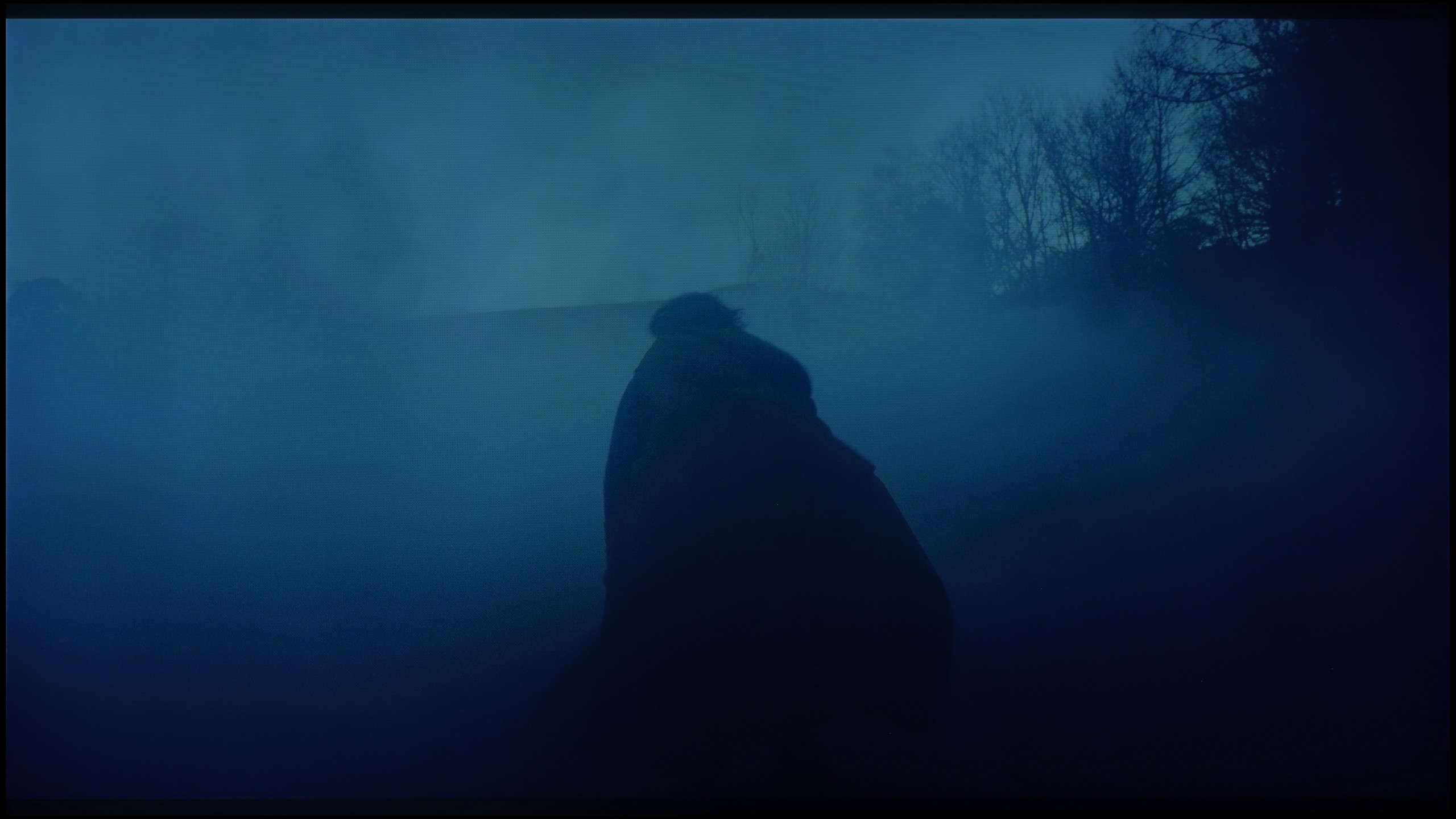

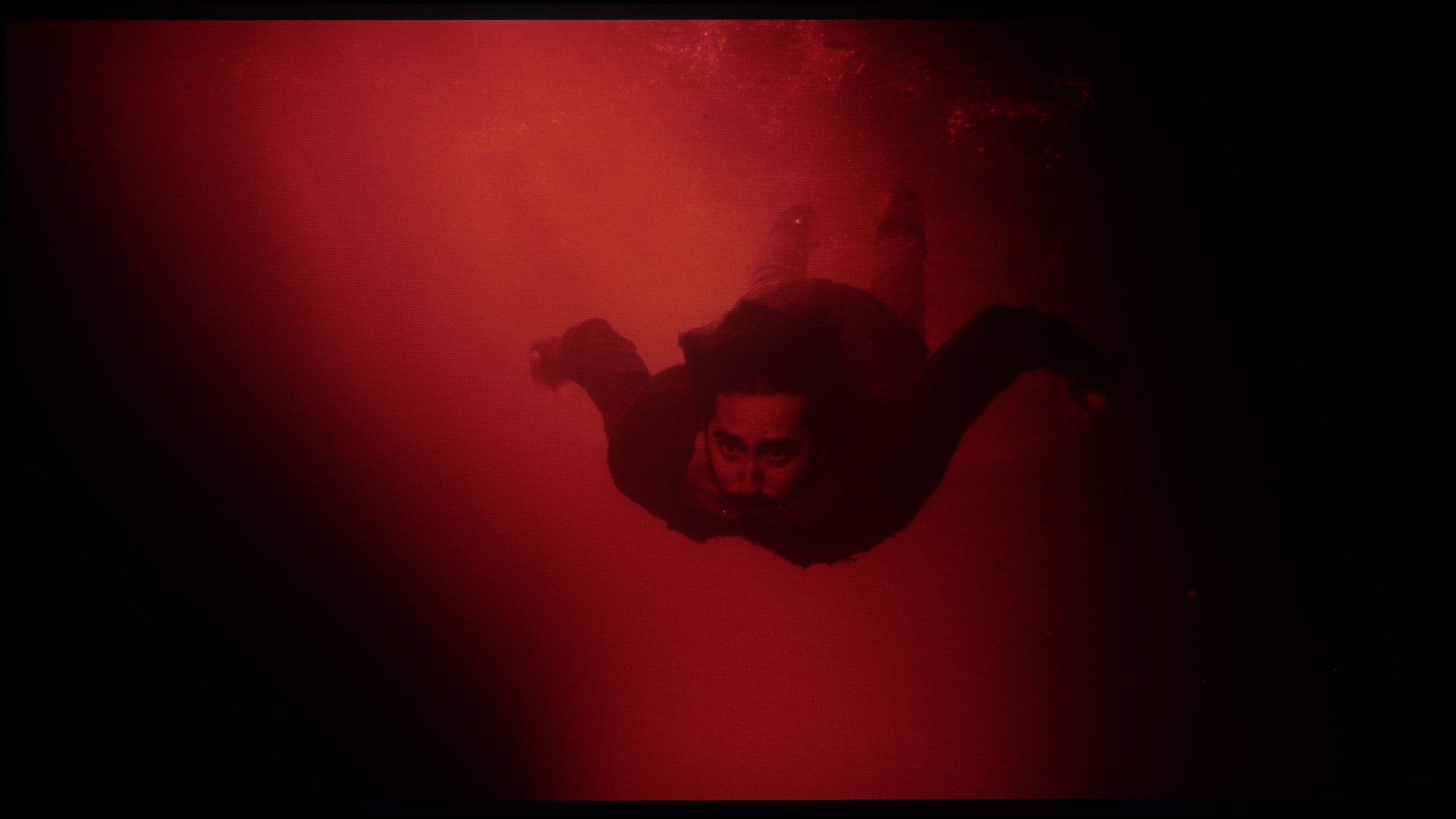




Hisense U7NQ offers excellent fluidity of tonal transitions. Overall, the image is very well balanced, and transitions between different shades of colors are nearly flawless. For more discerning viewers, small joinings in darker hues can be detected; however, these imperfections are minimal and do not significantly affect the overall picture quality. Tonal fluidity is at a very high level, making viewing content on this television particularly enjoyable, with no noticeable problems with gradients and color transitions.
In this regard, the QN80F really delivers. The transitions between colors are smooth, nothing is choppy, and there are no annoying bands in the sky or strange blotches in the shadows. Movie scenes in darker tones performed particularly well – and that's where most televisions start to struggle. If one really looks for it, slight banding can be seen in the brightest areas, but that's really just nitpicking. In everyday viewing, no one should have a problem with this. To put it simply: the tonal transitions are so good that you can forget about them – and just enjoy the movie.
Image scaling and smoothness of tonal transitions
5.5/10
7/10
Smooth transition function


Image without overscan on the SD signal


When it comes to smoothing tonal transitions, despite the presence of the "Smooth and Gradient Image" feature in the test sequence, we did not notice that the feature added anything — we recommend turning it off. As for upscaling, the television handled our model well, and the branches in the background are not excessively jagged — the image seems quite plastic. However, it was slightly cropped by the so-called overscan.
If, while watching lower-quality materials – for example from YouTube – we notice strange color transitions or unwanted artifacts, it’s worth checking the settings and enabling the noise reduction function. In our opinion, the best setting is at the "medium" level – it effectively smooths out problematic color transitions while not excessively blurring the entire image. However, one must know this: this option tends to remove film grain. If someone cares about preserving this effect (e.g., in older films), it’s better to just turn it off – regardless of the level, the grain always disappears.
When it comes to scaling resolution (i.e., the so-called upscaling), Samsung – as always – performs very well in this area. The QN80F may not compare to the top models worth several thousand, but for its price class, it really performs impressively. Very low-quality materials (e.g., from SD television or older video files) are noticeably improved and look surprisingly decent. The only noticeable drawback is the typical Samsung issue with overscan – that is, slightly cropping the edges of the image at very low resolutions, e.g., 576p.
Blur and motion smoothness
7.3/10
7.5/10

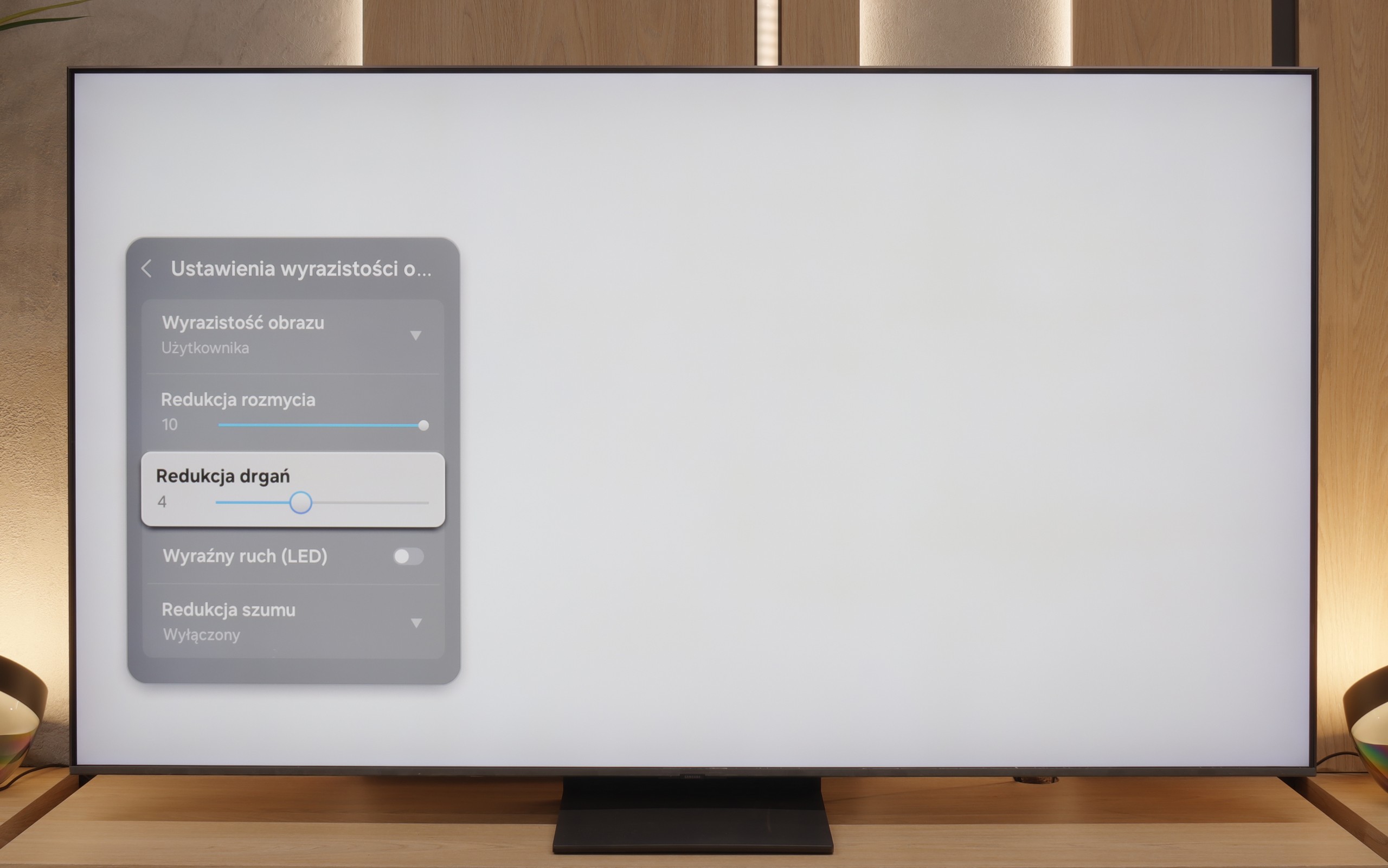
Blur (native resolution, maximum refresh rate):




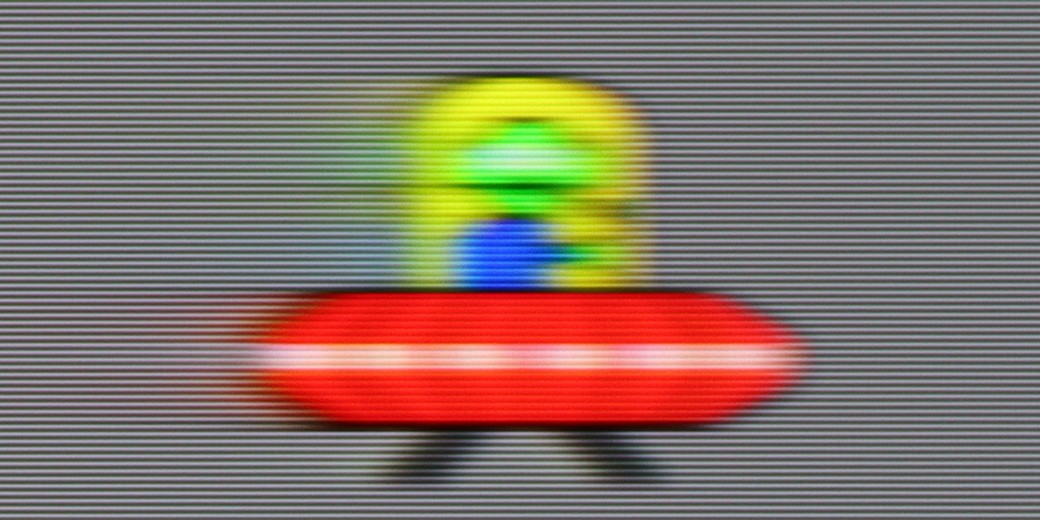

Blur (BFI function enabled):



Image flickers in this mode

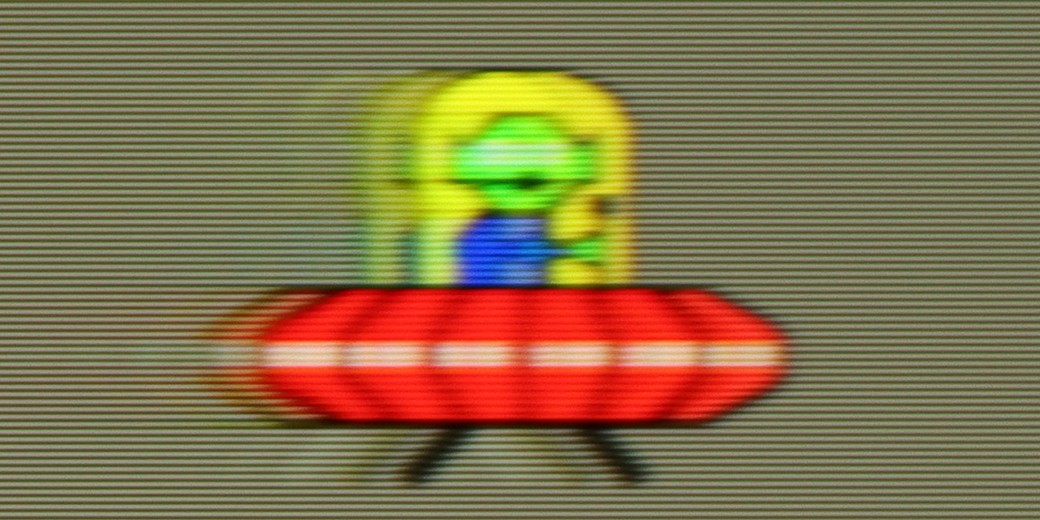

Hisense U7NQ has a refresh rate of 144 Hz, which definitely contributes to smooth motion. For movie enthusiasts, there are two features available: judder reduction and motion blur reduction. The judder reduction feature minimizes the effect of so-called judder, which is the unpleasant stuttering of the image, particularly noticeable at lower frame rates. On the other hand, motion blur reduction helps sharpen fast-moving objects, which is useful when watching dynamic action scenes.
As for motion blur, the TV has a decent response time, so excessive blurriness is not visible, except in specific situations, such as the test with the little green alien on a dark background. In such cases, slight artifacts may appear, but overall, the TV handles dynamic images well, providing satisfactory motion quality.
QN80F is truly a "fast" television. The applied panel offers a refresh rate of up to 144 Hz, which in practice means that the screen keeps up with the action – whether we're watching a movie, playing games, or browsing dynamic content on the internet. The image doesn't tear, it doesn't excessively blur, and everything simply looks smooth and pleasant to the eye. Of course, the manufacturer hasn't forgotten about movie fans – in the settings, we find an option for motion smoothness adjustment, allowing us to tailor the effect to our personal preferences. You can leave a more "cinematic" look (for those who enjoy a classic film vibe) or crank up the smoothness to a higher level for a theatrical smoothing effect. Importantly, the choice is ours. Watching movies and playing on the QN80F is simply a joy.
Console compatibility and gaming features
8.5/10
8.2/10
- ALLM
- VRR
- VRR range48 - 144Hz48 - 144Hz
- Dolby Vision Game Mode
- Correct implementation of HGIG
- 1080p@120Hz
- 1440p@120Hz
- 4K@120Hz
- Game bar

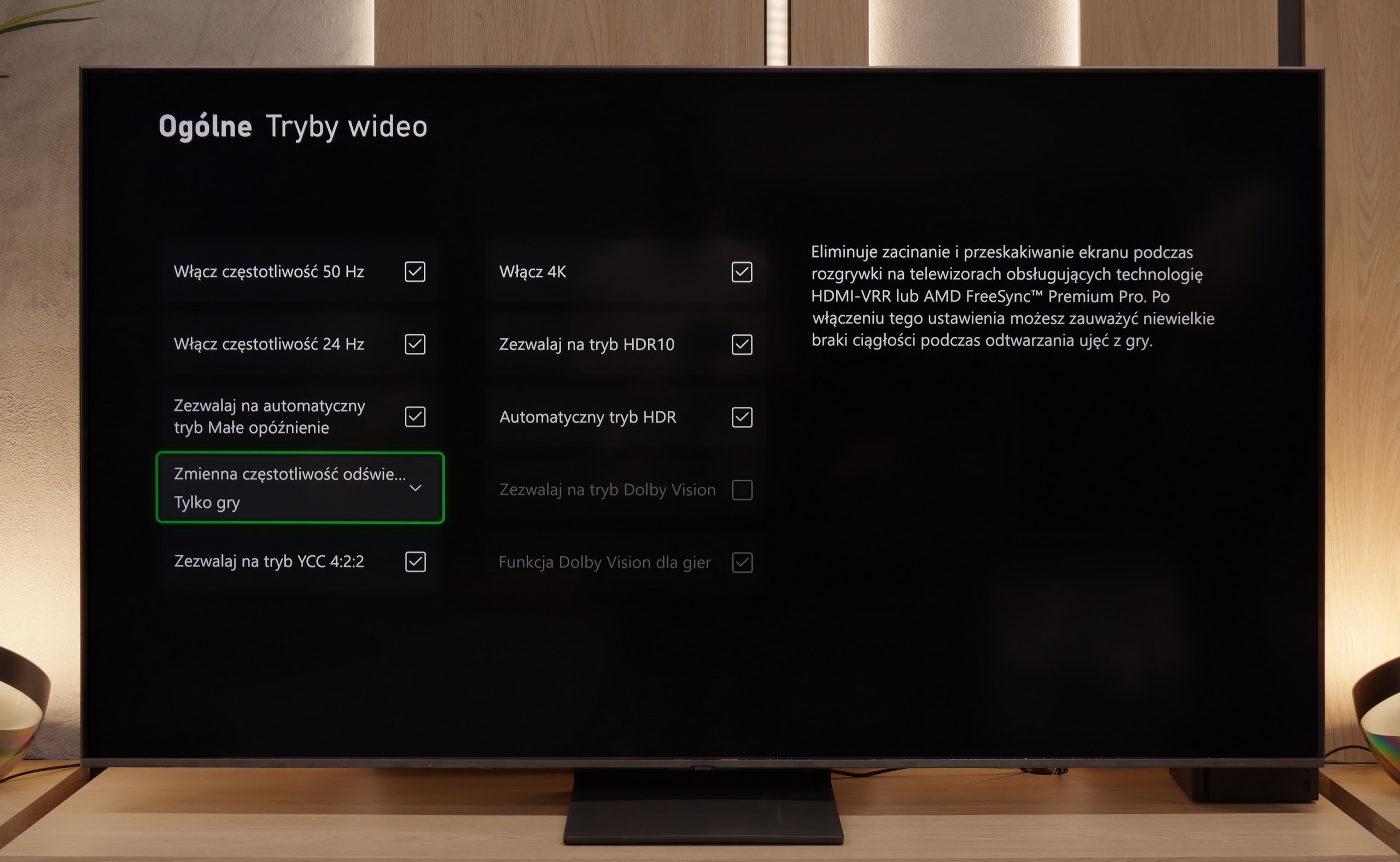



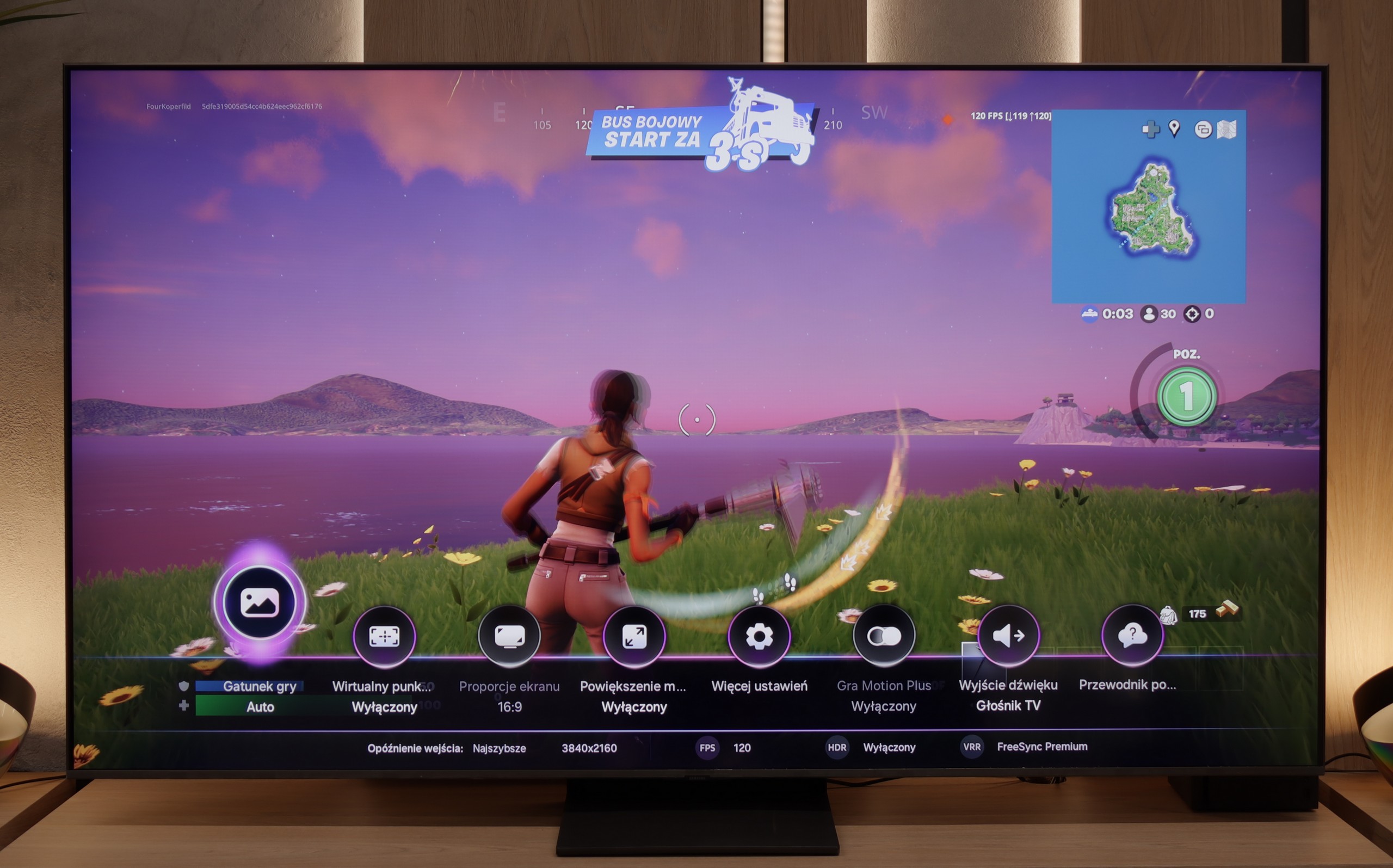

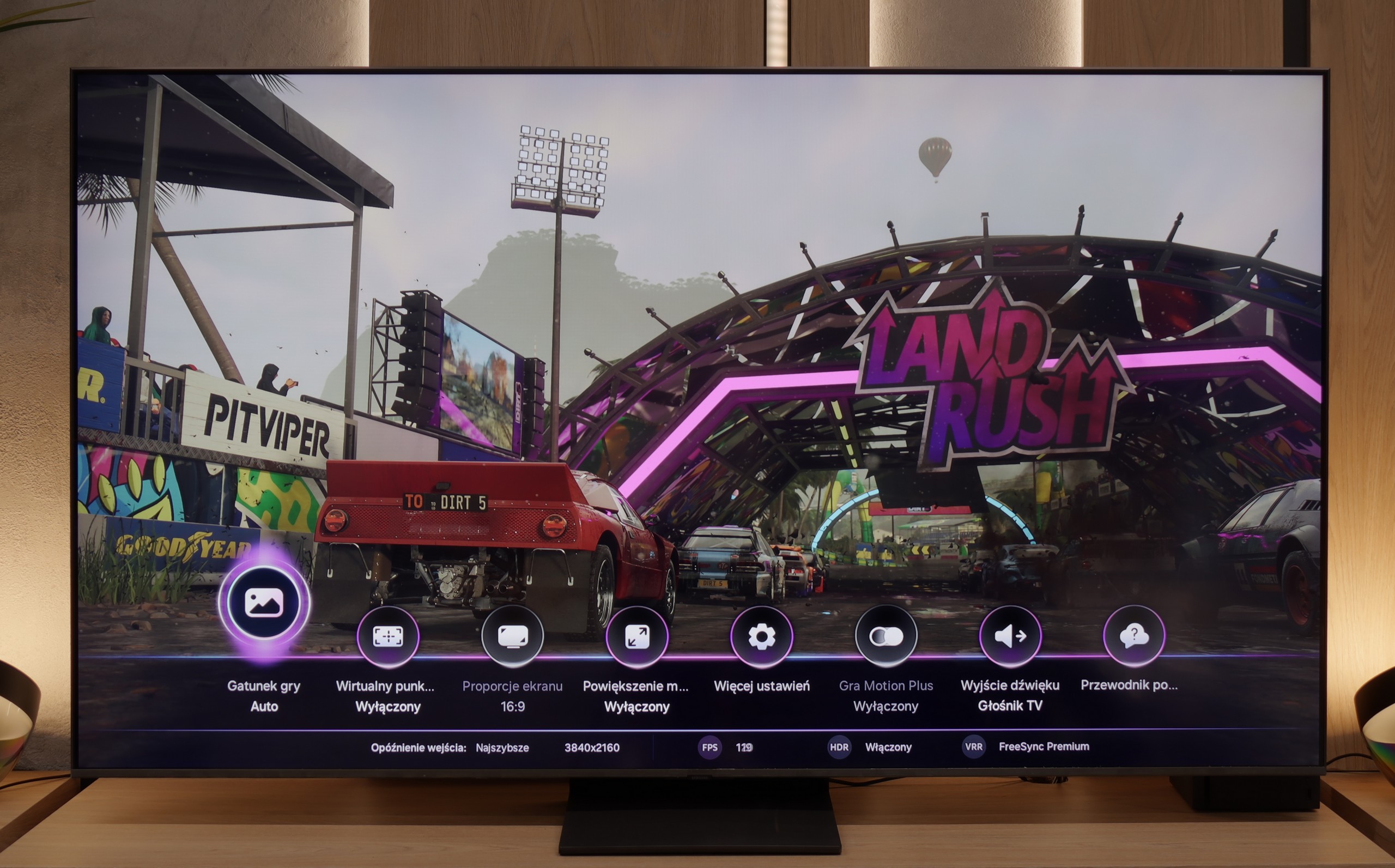
Hisense U7NQ offers everything a gamer might need for comfortable gameplay. The TV supports a refresh rate of 144 Hz, providing an incredibly smooth image, especially in dynamic action games. The VRR (Variable Refresh Rate) feature ensures that the image adapts to changing frames per second, eliminating stuttering and tearing. Additionally, there is an ALLM (Auto Low Latency Mode) feature that automatically switches the TV to game mode, minimizing input lag.
The TV also supports Dolby Vision, which is particularly important for gamers who value high contrast and vivid colors in games that support this format. The Hisense U7NQ also has a Game Bar feature that allows quick access to essential settings during gameplay, as well as support for G-Sync technology, which further reduces image tearing.
Unfortunately, despite the wide range of features, support for the most popular HDR format in gaming — HGiG — is lacking. This may be disappointing for gamers who expect optimal detail representation in HDR scenes. Nevertheless, the remaining features make the Hisense U7NQ a solid choice for any console gaming enthusiast.
The Samsung QN80F is a TV that delivers on almost every front when it comes to gaming. We have a 144 Hz panel, four fully-fledged HDMI 2.1 ports, support for gamers in the form of variable refresh rate (VRR), automatic low latency mode (ALLM), and even one of the best-designed game bars on the market. The cherry on top is the motion smoother, which – uniquely in the world – works in games without significantly increasing input lag. Sounds like almost the perfect TV for gamers? And indeed, it is almost that.
As usual, Samsung does not support Dolby Vision in games, but that no longer surprises anyone. However, what is much more surprising is that... the HGIG feature has disappeared – that is, the system that allows the console (e.g., PlayStation 5 or Xbox Series X) to precisely match HDR tone mapping to the TV's capabilities. In the latest firmware update for the 2025 models, this option has simply vanished. It looks more like a bug than a deliberate move, but it must be honestly pointed out that as of the day of writing this review, the HGIG feature is simply not available.
And it is precisely because of this one deficiency that the QN80F goes from being almost the perfect gaming TV to a "nearly" perfect device. It's a shame – because everything else indicated that Samsung could set the bar very high once again in this generation.
Input lag
9.8/10
9.8/10
SDR
HDR
Dolby Vision
Input lag on the Hisense U7NQ is at a remarkable level, with a maximum of 16 ms, which is an excellent result even in Dolby Vision mode. This achievement is worth highlighting, as Dolby Vision mode often increases delays in other TV models, but here it has been avoided. Thanks to the low input lag, gameplay is smooth and responsive, which will be appreciated by both casual gamers and more advanced users.
QN80F does not disappoint when it comes to response time. The input lag for 120 Hz content drops below 10 ms, which can be considered an almost ideal result – it’s hard to expect more in this class of TVs. Gaming is smooth, responsive, and free from delays that could irritate even the most sensitive players. For 60 Hz materials, the lag is higher, around 19 ms, but this is a completely natural phenomenon and still falls within comfortable limits.
Compatibility with PC
8/10
8.8/10

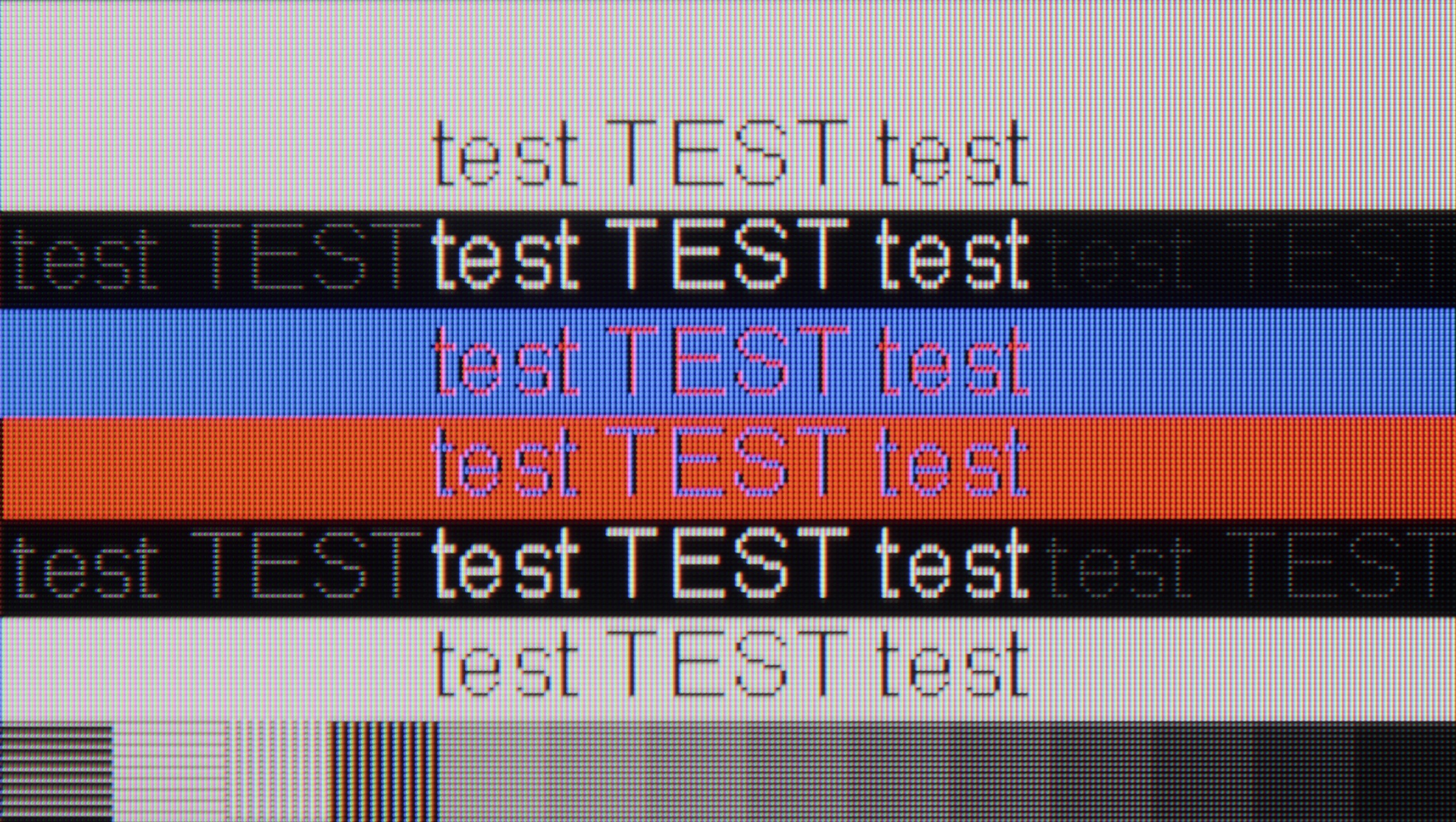
Hisense U7NQ offers full support for chroma 4:4:4, which ensures good font readability, especially when working with text. Overall, the image quality and visibility of characters are at a satisfactory level. However, it is worth noting the issue related to displaying fonts on a dark background — in this situation, the letters become practically invisible, and only vertical subpixels are visible.
Playing on the QN80F with a connected computer is pure pleasure. The TV works seamlessly with NVIDIA graphics cards (thanks to G-Sync support) and AMD (thanks to FreeSync Premium), and the 144 Hz refresh rate only enhances comfort during dynamic gameplay. Everything works right away, without unnecessary fiddling with settings – exactly as it should.
When it comes to work, it is also very good. The readability of fonts is high, and the texts appear sharp and clear. With very thin horizontal lines, one can notice slight imperfections, but really – you have to look closely. Unless, like us, you sometimes enjoy examining the screen with a magnifying glass… then you might spot something 😉.
Viewing angles
3.1/10
3.1/10
The viewing angles on the Hisense U7NQ are typical for a VA panel. Unfortunately, they leave much to be desired. The television lacks a coating that widens the viewing angles, resulting in a significant drop in image quality when viewed at an angle. Colors become washed out, and contrast noticeably decreases, making this television best suited for viewing directly head-on. This is a limitation that needs to be considered, especially if we intend to watch television in a larger group, where viewers may be sitting at different angles.
QN80F, like most TVs with VA panels, does not impress in terms of viewing angles. It is enough to lean slightly to the side to notice a significant drop in brightness and lost color saturation. The image loses its "depth" and "vividness," and darker scenes may appear slightly washed out. However, this is a typical characteristic of VA panels, which in return offer significantly better native contrast than IPS panels. In short: something for something. If you are sitting directly in front of the screen – there will be no problem. But when watching together in a larger group, it is worth keeping this in mind.
TV efficiency during daytime
7.6/10
6.6/10

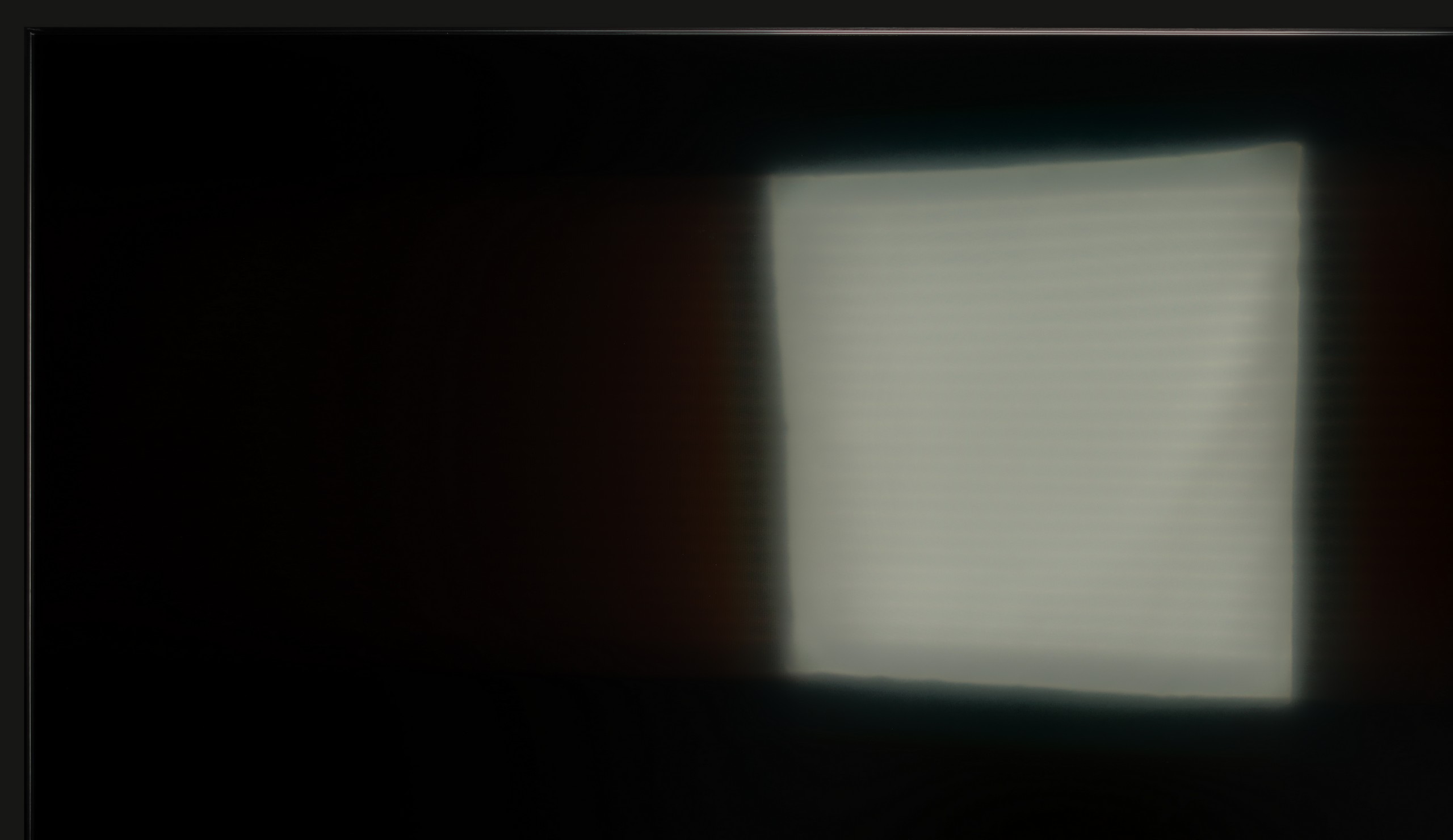


Matrix brightness
Average luminance SDR
SAMSUNG QN80F: 543 cd/m2
Hisense U7NQ: 915 cd/m2
Hisense U7NQ is equipped with a matte coating panel that moderately suppresses reflections. Nevertheless, a brightness level of 915 cd/m² is impressive and ensures that the television performs very well even in bright rooms. With such high brightness, watching content during the day is not a problem, and the image remains clear and legible even with a large amount of external light.
QN80F is really a bright TV. The average brightness in SDR materials is around 550 nits, regardless of the scene, which practically means that you can comfortably watch content even in a well-lit room – and you don’t have to close the curtains every time we turn on a movie. The new satin coating of the panel is also a plus, as it handles reflections much better compared to last year's QN80D. Glare is less bothersome, and the screen maintains readability in various lighting conditions. It's hard to find fault with anything here – the QN80F simply performs great during the day.
Details about the matrix
Subpixel Structure:

Panel uniformity:

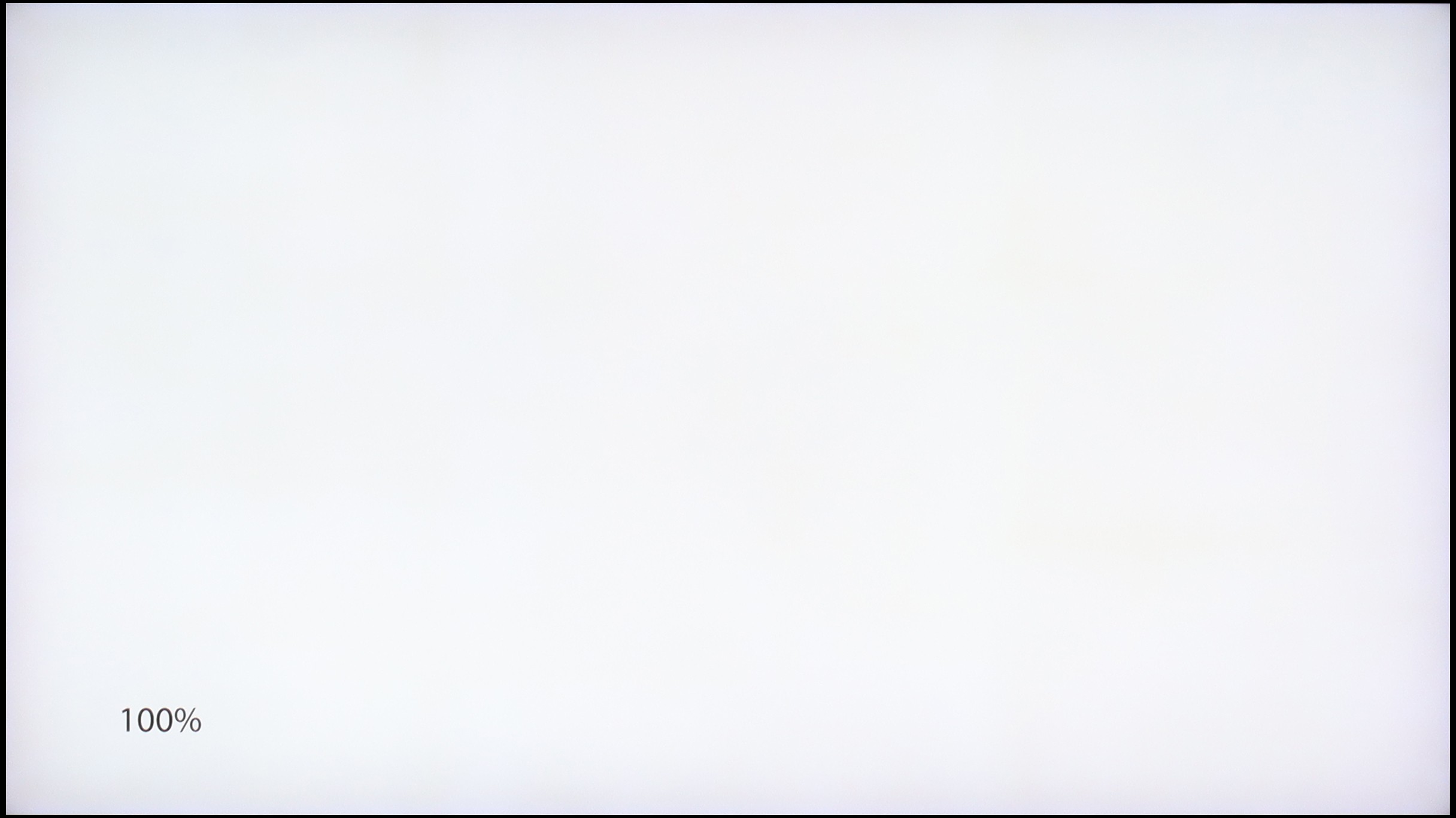
Hisense U7NQ
SAMSUNG QN80F
TV features
9/10
7.5/10
- HDMI inputs2 x HDMI 2.0, 2 x HDMI 2.1 48Gbps0 x HDMI 2.0, 4 x HDMI 2.1 48Gbps
- OutputsToslink (Optical audio), eARC (HDMI), ARC (HDMI), Mini-Jack (Headphones)Toslink (Optical audio), eARC (HDMI), ARC (HDMI)
- Network InterfacesWi-Fi 2.4GHz, Wi-Fi 5GHzWi-Fi 2.4GHz, Wi-Fi 5GHz, Ethernet (LAN) 100Mbps
- TV receptionDVB-T, DVB-T2, DVB-S, DVB-S2, DVB-CDVB-T, DVB-T2, DVB-S, DVB-S2, DVB-C
Classic features:
- Recording to USB (terrestrial TV)
- Recording programming
- Picture in Picture (PiP)
- RF remote control (no need to aim at the screen)
- Backlit remote control
- Teletext
- Audio only mode
- Possibility to connect Bluetooth headphones to the TV
- Possibility to simultaneously use Bluetooth headphones and the TV speaker
Smart features:
- AirPlay
- Screen mirroring (Windows Miracast)
- Wyszukiwanie głosowe
- Voice search in native language
- Ability to connect a keyboard and mouse


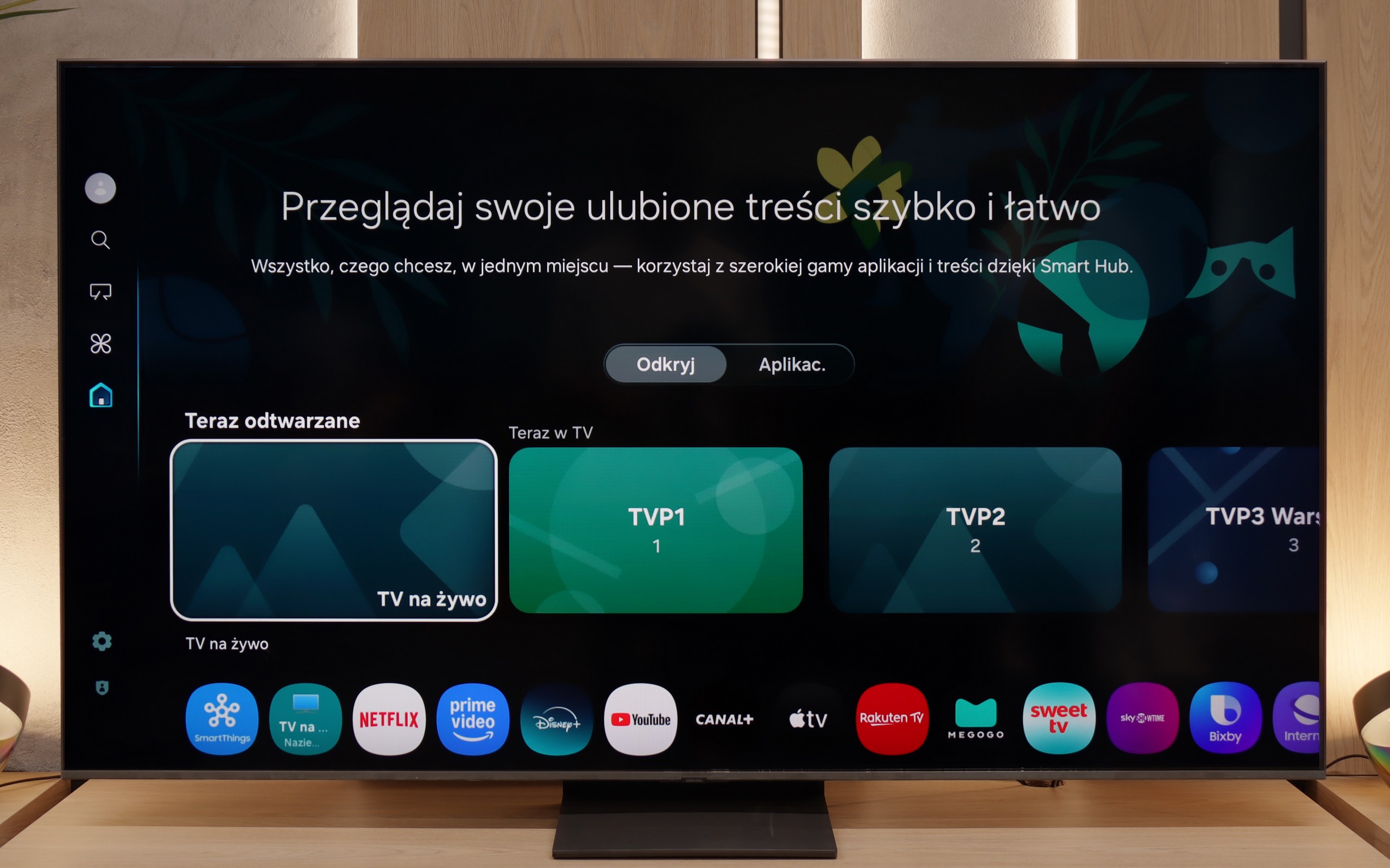
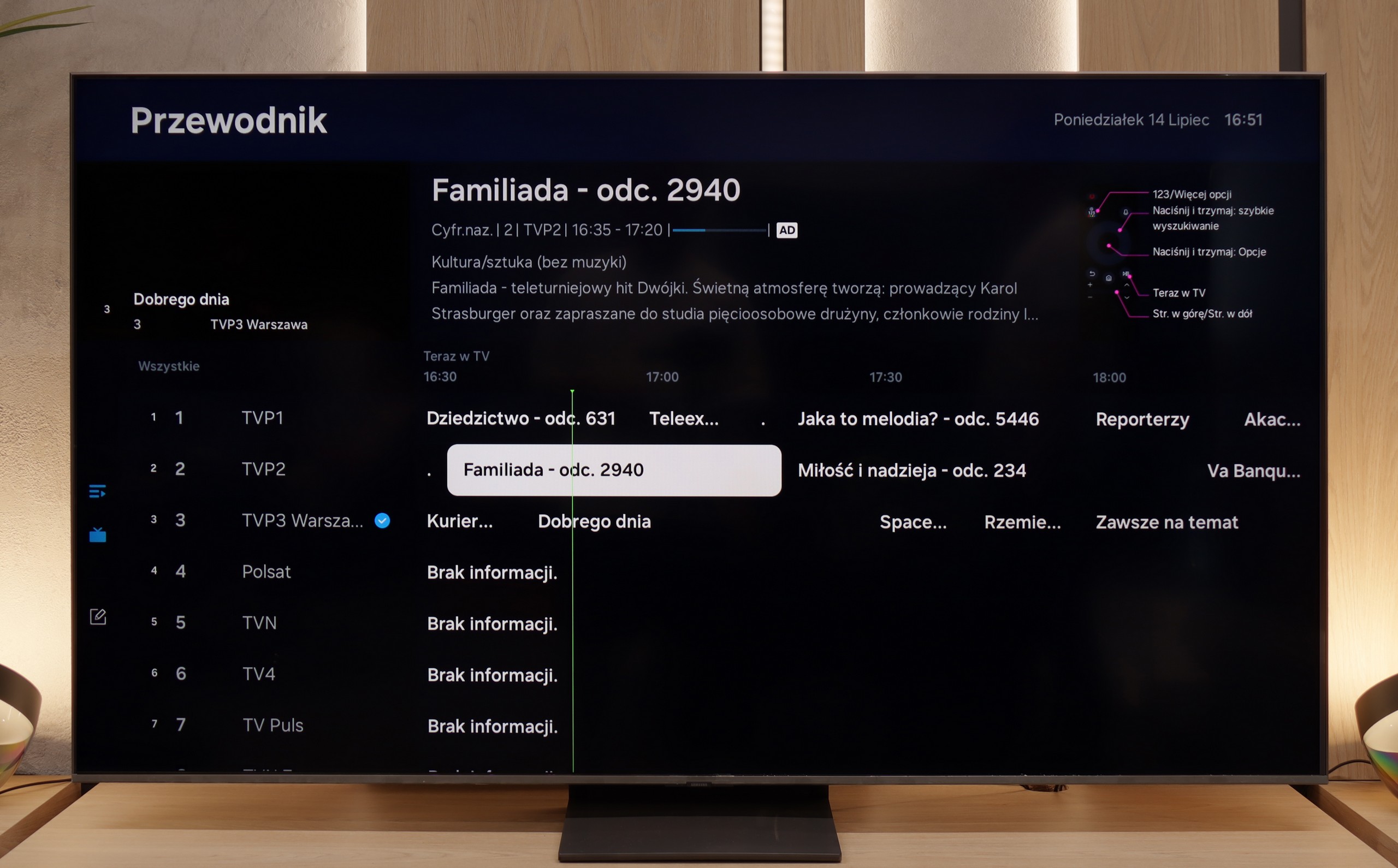
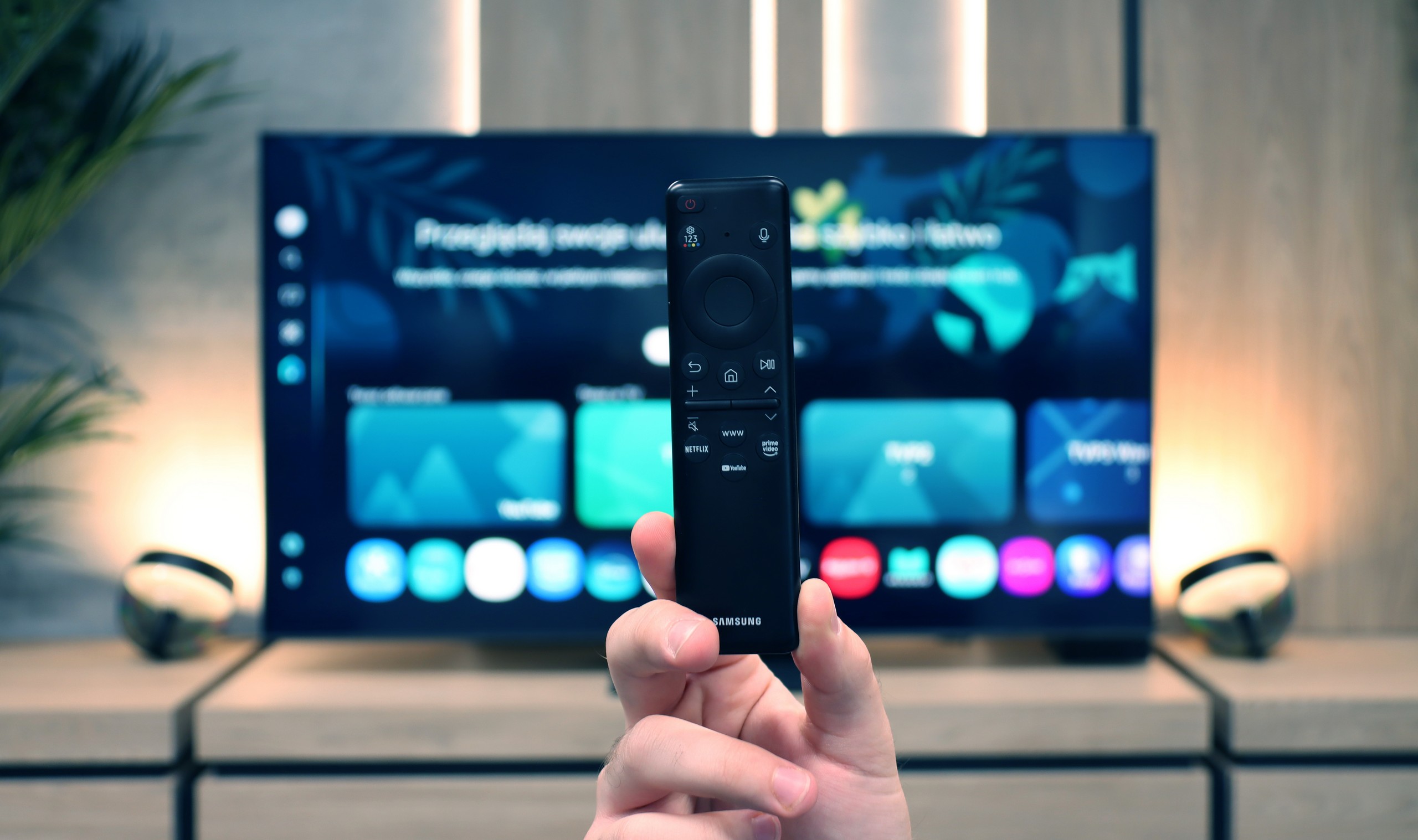
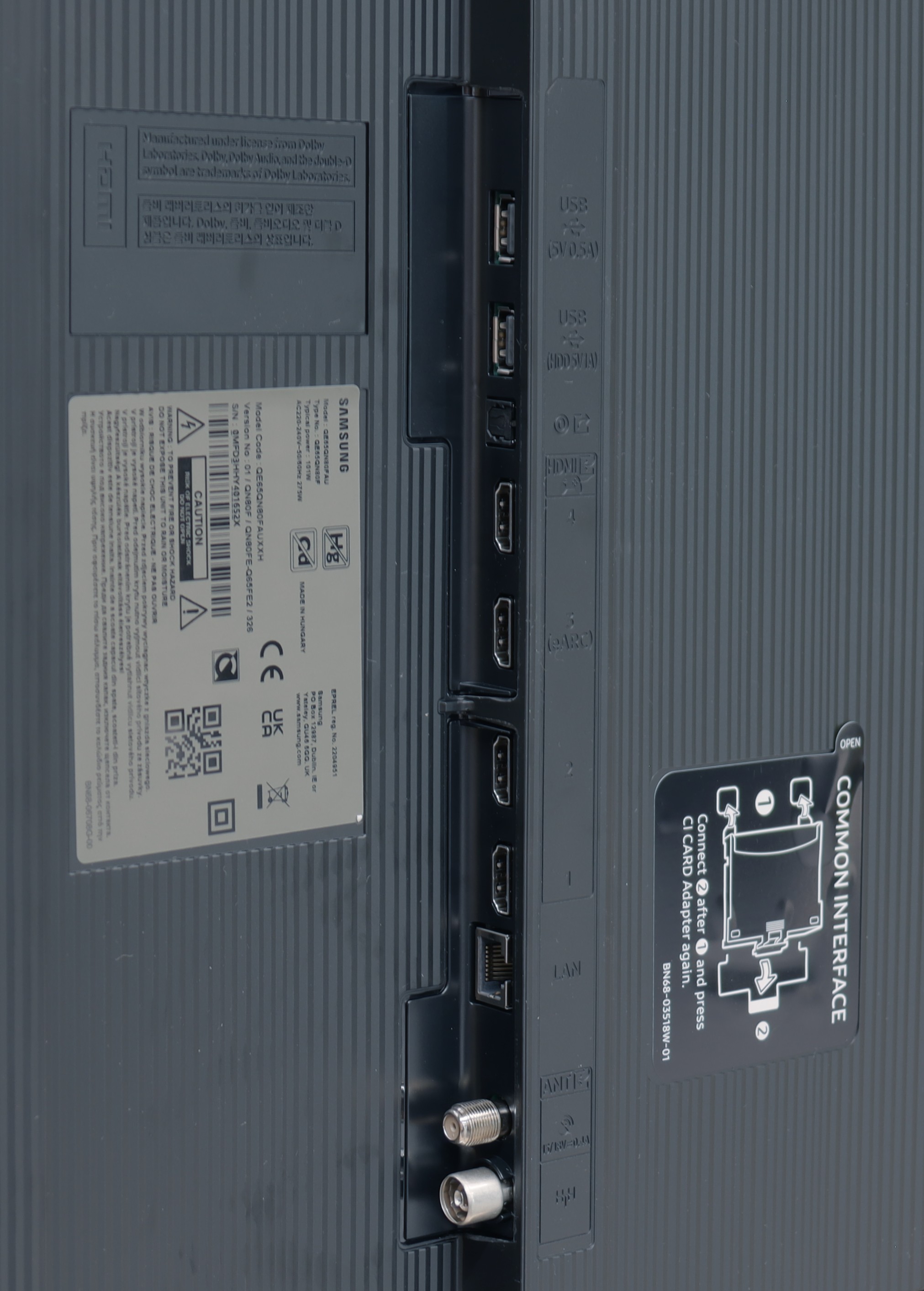
Hisense U7NQ uses the VIDAA operating system, which generally works quickly and smoothly, offering a user-friendly interface. There are plenty of applications available, but unfortunately, it lacks music apps like Spotify or Tidal. This is a limitation that may discourage users looking for a more developed app ecosystem.
The TV offers many useful user features that enhance its versatility. The ability to record programs, support for AirPlay, and Bluetooth for connecting various peripheral devices mean that the Hisense U7NQ can successfully serve as a central point for home entertainment.
Hisense U7NQ looks modern thanks to its narrow bezels and elegant single stand that pairs well with the rest of the device. However, the device itself is not among the sleekest on the market, especially compared to competing models from Korean manufacturers known for their exceptionally thin TVs. Despite this, Hisense U7NQ still offers an aesthetic and stylish design that will easily fit into most interiors.
SmartTV QN80F: Tizen
When it comes to smart features, the QN80F has nothing to be ashamed of. On the contrary – Tizen is one of the richest operating systems in terms of functionality. We have voice search, support for AirPlay, Miracast, and all the major streaming platforms at our fingertips. But Samsung's true advantage reveals itself in the smart home – SmartThings. Here, you can not only synchronize light bulbs and vacuum robots but also integrate devices from other manufacturers, thanks to support for the Matter standard. Suddenly, it turns out that the QN80F can serve as a home command center. There is just one "but" – Tizen is a closed system, so we might not find a few lesser-known apps. However, in practice, it still has everything that 99% of users need.
Classic TV features:
When it comes to classic features, it's just as good – well, almost. The QN80F supports picture-in-picture, a rarely seen but still useful PiP feature. We can easily find EPG, the old good teletext (yes, it works!), and the ability to connect external devices via Bluetooth – whether it's headphones or a soundbar. Unfortunately, there is no option to record to USB from the built-in tuners. That's a minor drawback, especially since the competition at a similar price point is increasingly offering this feature. It may not be a must-have function, but since everything else works so well, it's a pity that it missed that final touch.
Playing files from USB
9/10
8.4/10
Supported photo formats:
Maximum photo resolution:

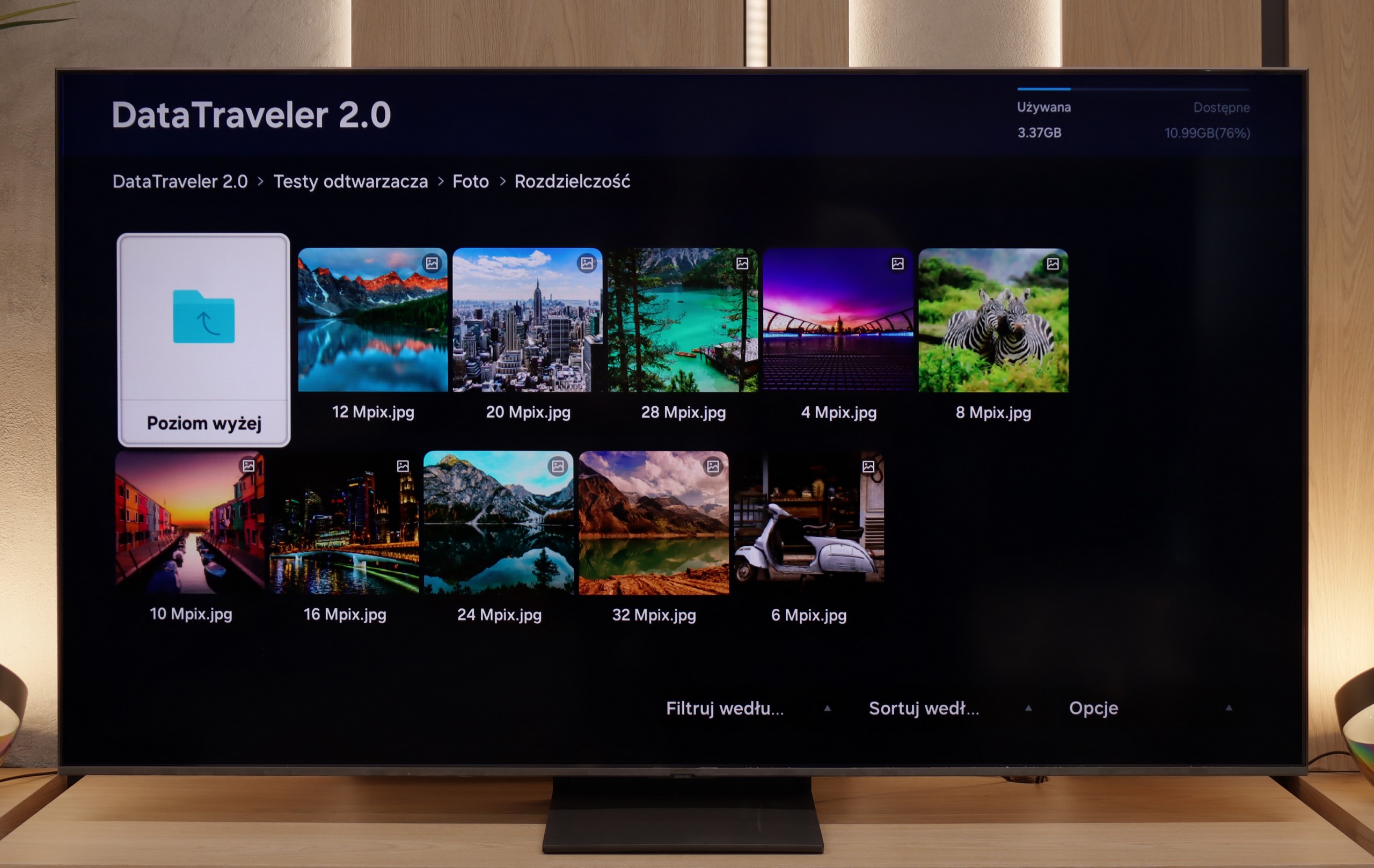
The built-in media player in the QN80F handles most popular video formats – from classic MP4 to somewhat more demanding containers. It's not a powerhouse like VLC, but it's sufficient for home use. The situation is worse when it comes to photos – here, unfortunately, it's rather modest. The support is mainly limited to the JPG format, but hey, at least that's the most important one 👌. During our tests, there was also a minor issue with subtitles. The QN80F could only handle the simple text format .txt – other, more advanced formats (like .srt or .sub) were unfortunately not recognized.
Apps
7.7/10
8.7/10














































Sound
6.9/10
6.7/10
- Subjective sound quality:6.9/106.7/10
- Dolby Digital Plus 7.1:
- Dolby True HD 7.1:
- Dolby Atmos in Dolby Digital Plus (JOC):
- Dolby Atmos in Dolby True HD:
- DTS:X in DTS-HD MA:
- DTS-HD Master Audio:
For a TV of this class, the QN80F sounds surprisingly good. It supports Dolby Atmos format, which is worth noting, as this is still not a given in many models in this range. Unlike the thinner QN70F, you can even feel a slight bass here – all thanks to the thicker casing, which simply gives more room for the sound to "breathe." For everyday viewing and series, it's more than enough, and with the right settings, you can even consider listening to music without the need to connect external equipment. However – as is often the case with Samsung, there is unfortunately a lack of support for DTS:X format, so if we are using audio devices that support this format, we will first have to connect them to the receiver and only then to the TV.


